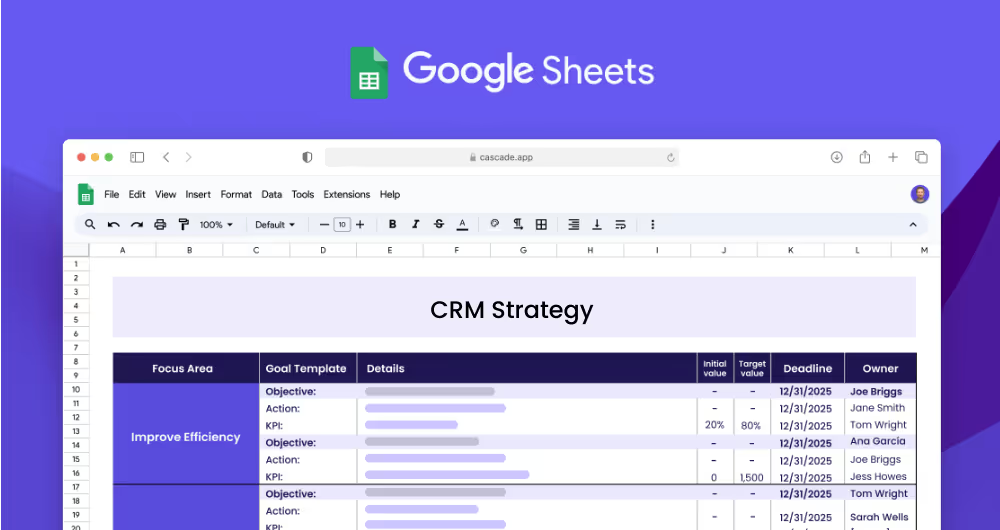A CRM strategy is a plan that outlines how a company will use customer relationship management (CRM) software to support their overall business goals. It should include specific objectives and actionable steps to help the company achieve those objectives. The strategy should also address how the company will use the CRM software to improve customer experience and maximize the value of their data. With a clear, actionable plan in place, companies can ensure that their CRM software is used effectively and efficiently.
Each focus area has its own objectives, projects, and KPIs to ensure that the strategy is comprehensive and effective.
The CRM Strategy template is designed for sales, marketing, and customer success teams of all sizes and industries. It provides a comprehensive yet straightforward approach to planning and executing a successful CRM strategy. The template simplifies the process of creating a strategy, allowing teams to focus on the essential details that will drive their CRM strategy forward.
Focus areas are the primary goals that the CRM strategy should address. It is important to ensure that the focus areas are clearly defined and related to the company’s overall objectives. Examples of focus areas could include implementing new CRM software, enhancing existing CRM software, and optimizing CRM software.
Objectives are the specific goals that should be achieved within each focus area. They should be measurable and actionable, and should be designed to help the company reach their broader objectives. Examples of objectives could include introducing CRM software, increasing CRM software usage, and improving data accuracy.
KPIs (key performance indicators) are measurable targets that can be used to track the progress of a particular objective. They should be realistic and achievable, and should be specific to the objectives they are designed to measure. Examples of KPIs could include user adoption rate, usage rate, and data accuracy rate.
Projects (or actions) are the steps that should be taken to achieve the KPIs. They should be specific and achievable, and should be designed to help the company reach their broader objectives. Examples of projects could include developing a training plan, establishing usage goals, and launching a data accuracy campaign.
If you’re ready to accelerate your strategy and see faster results, consider using Cascade Strategy Execution Software. Unlike spreadsheets, Cascade provides a streamlined platform designed to help you create, track, and execute your strategy with ease. Sign-up for free or book a demo with one of our strategy experts to get started today!


